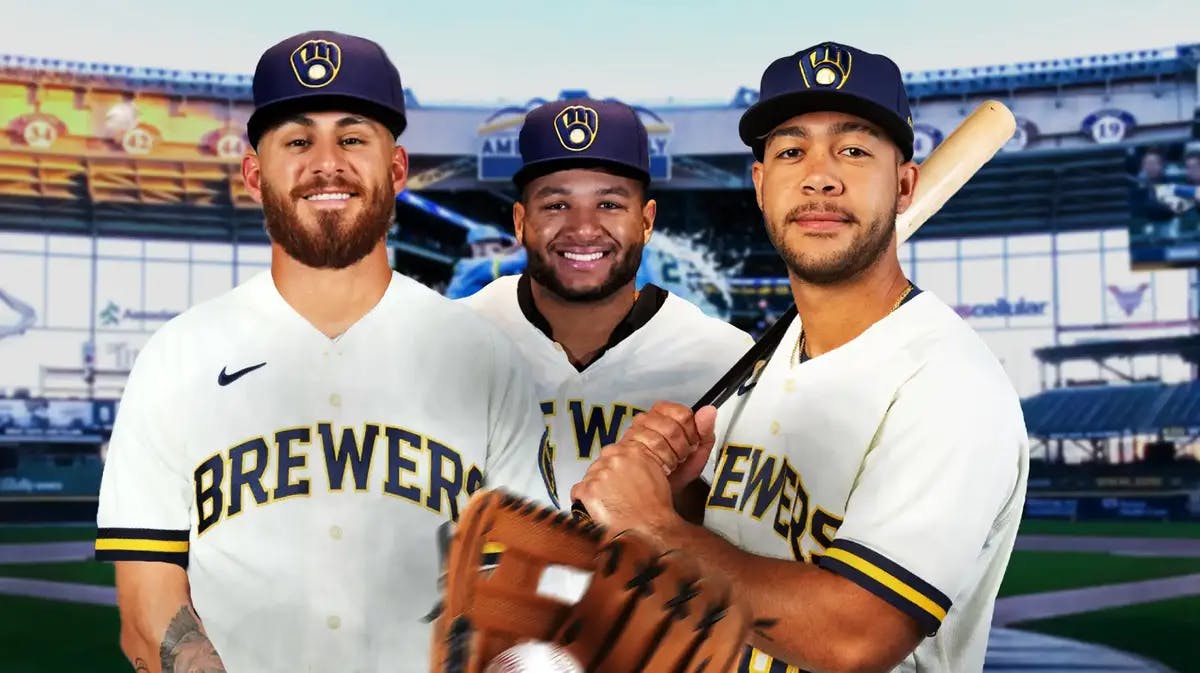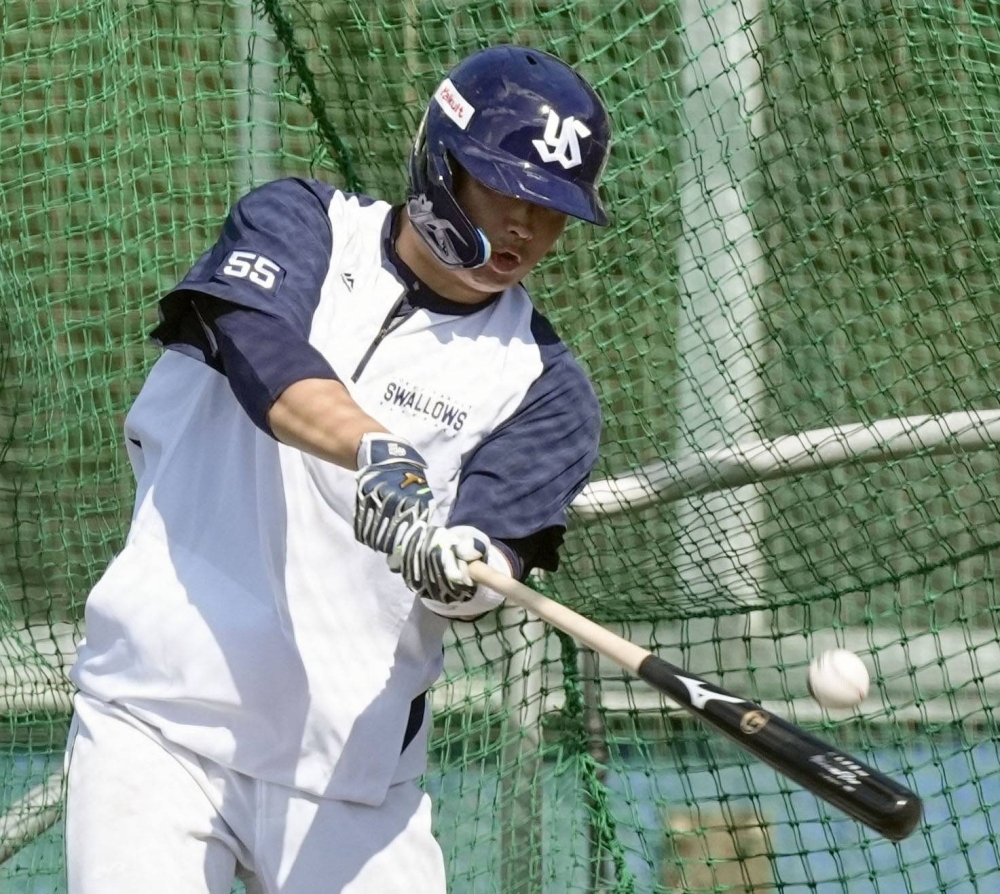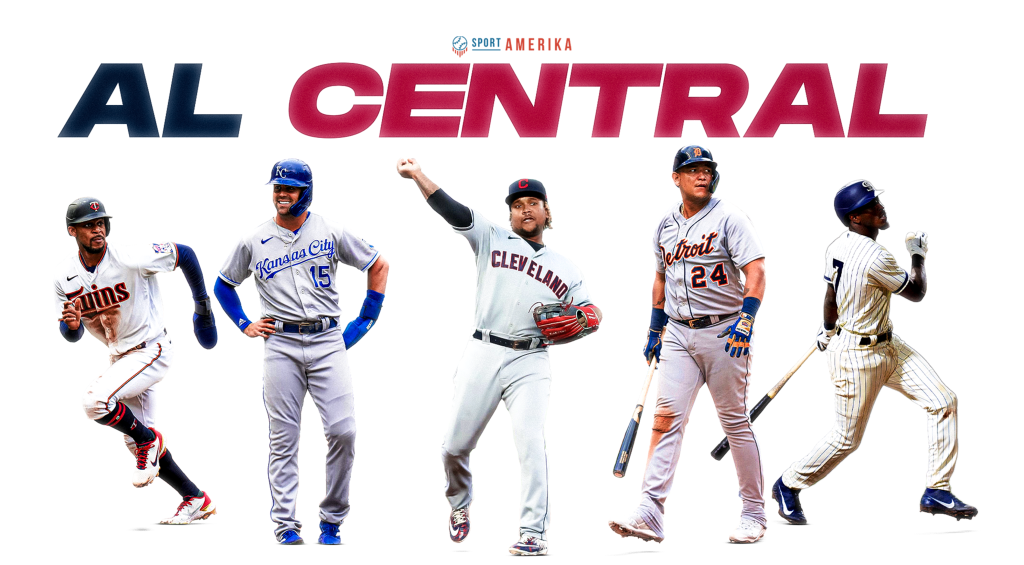MLB 2024 farm system rankings: Keith Law ranks all 30 teams, Orioles are new No. 1
Keith Law
Feb 9, 2024
As part of my annual prospect rankings, I’ve also ranked all 30 major-league teams’ farm systems here, with a brief explanation of why they’re in this order — although I think you’ll get an even clearer picture on any individual team by reading the team reports that will begin to roll out on Monday. Bear in mind that these rankings only consider players currently in the system and eligible for the rankings, meaning players who have not yet lost rookie status.
I consider all prospects in a system for the rankings, not just those on the top 100 list; there’s still value in prospects who don’t project to be stars, or even regulars, whether it’s for your own club or for trades. The increased number of teams scouting the Rookie-level complex leagues to look for players to acquire in trades only further justifies this philosophy for ranking systems — teams are telling us these prospects have value. I’ll also note that I think the minors as a whole are weaker than they’ve been in a while, a consequence of a lot of promotions over the last year or so, the elimination of short-season leagues, and just random variation over the years.
1. Baltimore Orioles
The Orioles’ system has become ridiculously deep in position players now that the players they’ve signed in international free agency the last few years are bubbling up, with that particular group led by No. 20 overall prospect Sammy Basallo. They have so much depth in the infield that they were able to trade shortstop Joey Ortiz (No. 58) — who looks like a 3 WAR player right now — for Corbin Burnes and still have more infielders than they can possibly play. There’s also some more pitching coming even though they have largely eschewed drafting arms with high-round picks, with their top two pitching prospects coming via trade and several other international free-agent pitchers now on their top 20 list. They’ve drafted well and developed well and continue to find value where other teams might miss it. For all of the hype the Orioles’ system has received in the last five years, it might be better than ever right now.
2. Milwaukee Brewers
The Brewers added to their system with the trade that sent their ace Corbin Burnes to Baltimore for Ortiz, a deal that hurts their playoff chances this year but should give them an everyday shortstop for the next six seasons. Their system has a little of everything right now — a couple of potential superstars, some high-end pitching, some teenagers in the low minors who look like upside plays — and could look very different in either direction based on how their 2023 draft class, which looked outstanding on paper, shows up in its first full season.
3. Los Angeles Dodgers
No longer atop the list but still strong and deep, the Dodgers just keep turning … well, not lead into gold, but something near gold (mercury? iridium?) into gold, picking up River Ryan (No. 33) in a trade and Peyton Martin late in the draft and developing them both into high-end starting pitching prospects in a year. The Dodgers also remain one of the leaders at finding talent on the international free agent market even beyond their top few signings, with a lot of very toolsy and/or projectable guys on their back fields every spring, one of whom might turn into the next Josue De Paula (No. 25). They did see their top prospect from last year, Diego Cartaya, flop in his Double-A debut and look bad doing it, raising questions about the feel to hit and the catching, although one player dropping doesn’t destroy a farm system. They remain in good position to swing a big trade when they need to, and wisely added another promising arm (Jackson Ferris) in the Michael Busch trade to keep their pitching pipeline rolling.
4. Arizona Diamondbacks
Part of the surprise surrounding Arizona’s 2023 National League pennant-winning season was that they still have so much talent coming, with Jordan Lawlar (No. 4) ready to step into the lineup this year and plenty of additional position-player depth behind him. Druw Jones (No. 41) is a wild card after an injury-marred 2023 where he didn’t play that well when he was on the field — but he was also recovering from major shoulder surgery when the year began, so I haven’t given up on him yet. I don’t think they have another Brandon Pfaadt in the system but they do have some back-end starter/swingman types who could end up helping the team in the near future.
5. Chicago Cubs
This system got good in a hurry; I could argue for 10 Cubs prospects to be in the top ~125 or so if I were inclined to keep ranking guys (note: I am not so inclined). They’ve drafted so well the last few years, landing two top 100 prospects and a guy who’ll probably start the season in their rotation with their last three first-round picks, while four of their top 10 guys came over in trades. They’ve got players coming on the mound and at positions up the middle, maybe a little light on potential middle-of-the-order bats. They’ve had some misses on the international front, and they might have only one pitching prospect with a chance to be more than a league-average starter right now, but this is the best shape the Cubs’ system has been in since before Anthony Rizzo caught that final out in 2016.
6. Detroit Tigers
No, really: The Tigers’ system is good, even with, frankly, a lot of misses still running around the system. Their last three first-round picks are all on the top 100, and they have a large group of players heading towards the majors who look like they’ll at least be regulars or back-end starters, guys like Josue Briceno who have positional questions but big bats or Brant Hurter who doesn’t look like a typical starter but keeps succeeding thanks to deception and control. The development of Colt Keith (No. 36) and Parker Meadows (No. 97) should give Tigers fans hope, as both guys were very much unfinished products when drafted — with Meadows showing a big hitch in his swing — and have evolved into complete players with the potential to help right now. I think it’s been some time since the Tigers had a success story like that.
7. New York Yankees
The Yankees’ system is a little light at the top right now, but that could change very quickly, as they had one of the most stacked complex-league teams in memory, with one guy sneaking on to my top 100 in Roderick Arias (No. 98) plus as many as five guys who could challenge for the top 100 as soon as next year — and some depth beyond that. Their international scouting department has been on some kind of roll lately, and they’ve generated a ton of value through the draft recently. Their 2021 draft class hasn’t produced a big leaguer directly, but they’ve traded three of their top nine picks for major-leaguers, plus their second-rounder from 2022 (Drew Thorpe). I’m a little skeptical of some of their most famous guys but I am very excited about the lesser-known guys from that Florida Complex League team.
8. Boston Red Sox
The Red Sox’s system had a hell of a 2023, even with their top guy (Marcelo Mayer, No. 8) getting hurt again. Roman Anthony (No. 22) is one of the big development success stories in all of the minors, with a remade swing that’s one of the best in the minors and the team’s recognition that he was too good for Low A even when he wasn’t performing stat-wise. Their 2023 draft worked out better than they might have hoped, with Kyle Teel (No. 54) falling to their first pick and then the very high-upside athlete Nazzan Zanetello coming with their second pick. The big knock I had last year is still here, though — they do not have pitching, with nobody in full-season ball I’d project as a major-league starter, and at some point that will have to change via trade or a different approach in the draft.
9. Pittsburgh Pirates
The Pirates have pitching — they might have the best group of pitching prospects of any team right now, with three on the top 100, another (Anthony Solometo) in the next 25 or so, and more arms coming behind them. They may be the only team that has expressly focused on building pitching and then had success at it, at least at the minor-league level. To be fair, they did graduate a few position-player prospects last year (Henry Davis, Endy Rodríguez, the underrated Jared Triolo), but this might be a year for them to value position players a little more in trades and even the draft given where they pick.
10. Chicago White Sox
Not to denigrate Chicago at all, as this is about as good as their system has ever looked — I believe five guys on my top 100 this year is tied for the most the White Sox have ever placed — but I think in a typical year, this is more a median farm system than a top 10 one. They did extremely well in last summer’s trade binge, they’ve hit on a couple of recent high drafts, and we’ve seen guys develop in that system to a degree that we hadn’t seen in some time. It also should give Sox fans hope that some of the high-upside guys who haven’t performed that well yet, like the just-acquired Jake Eder, might make good on their abilities with better performances. I doubt they’ll do it, but trading Luis Robert while he still has time left on his contract could push them into the top five.
11. Washington Nationals
Similar to the White Sox, the Nats have a top-heavy system with a few potential stars but not a ton of depth, quickly sliding into reliever/extra guy territory even before we get out of their top 10. They have four guys on the top 100 and I’d bet at least three of them turn into above-average regulars in their roles, which is worth a whole lot even if the rest of the system doesn’t produce that much major-league value.
12. Tampa Bay Rays
I’m so used to Tampa Bay being at or near the top of these lists, but a lot of recent graduations, some draft whiffs, and a rare prospect trade (Kyle Manzardo, No. 66) have definitely hurt the system. They’ve produced so much pitching, but now have just one pitcher in their top 10, and Mason Montgomery had a very disappointing year despite above-average stuff. Relative to some of the teams above them here, they have fewer potential superstars, but more depth with guys who should have some positive major-league value (meaning WAR above 0).
13. St. Louis Cardinals
The Cardinals need pitching, so they’re going out to get pitching, but may I also point out that they might have some pitching coming soon? They’ve got a trio of promising up-the-middle position players in or close to the majors, then a raft of arms — maybe back-end starters, maybe bulk relievers — who should also start in or quickly get to Triple A this year. What they may lack is a potential superstar, someone who could be a 6 WAR player; their best guy is shortstop Masyn Winn (No. 16), who I think will be very valuable because of his glove, position and arm, but I think a 6 WAR season is asking too much of his bat.
14. Cincinnati Reds
Ton of depth here, maybe no stars unless Cam Collier (No. 50), who will be 19 this year, takes a step forward and shows improvement at third base. They’re in a similar position to Tampa Bay, with a long list of players who look like they’ll produce something in the majors but may do so as part-time guys or relievers.
15. New York Mets
The Mets did pretty well in their trades of big contracts, landing three of their top 10 prospects and adding some interesting depth guys in smaller deals (such as the one that sent David Robertson to Miami for two good prospects off the Marlins’ complex league team). They also remain a highly productive team in the draft, a drum I’ve been banging for a while, as they’ve traded so many of their drafted players that I think their success there can be easy to overlook.
16. Seattle Mariners
This one might change in a hurry, as the Mariners have a huge collection of teenage position-player prospects with big upside but big uncertainty. Their top international free-agent signing from 2023, Felnin Celesten, didn’t play last year due to injury, and they led their 2023 draft with three high school position-player prospects, one of whom (Colt Emerson, No. 37) made my top 100 but all three of whom have pretty high upsides. After churning out arms for a while, the Mariners’ system might be out of potential starters for the moment, with no pitchers in their top 10.
17. Minnesota Twins
The Twins are solid up top, with a lot of guys bitten by the injury bug last year and a lot of pitchers who at least have work to do to project as starters, whether it’s stamina or a third pitch or command. They seem to have whiffed on their first-round picks in 2019 (Keoni Cavaco) and 2020 (Aaron Sabato), then traded their first-rounder in 2021 (Chase Petty), so that also hurts the system’s standing relative to other clubs.
18. San Diego Padres
Despite all of the trades they’ve made the last few years, the Padres still can point to some big upside on the farm, just nothing very close to the majors. The combined ages of their top five prospects is 97, from No. 3 overall prospect Ethan Salas (18 years old this season) to No. 23 overall prospect Jackson Merrill (21 years old), and all five offer substantial upside; I’m not even including 17-year-old Leo De Vries, whom they signed in January for $4.2 million and will debut somewhere this summer. That makes for a volatile system that could move up or down significantly based on the performances and physical development of all of those young’uns.
19. Philadelphia Phillies
The Phillies have some sneaky depth here, with a very talented Low-A Clearwater roster in 2023 buttressing the system, and a solid mix of pitching and position players across all levels. They might end up with a pair of stars in Justin Crawford (No. 43) and, if he comes back 100 percent from Tommy John surgery, Andrew Painter (No. 34), while they have significant depth on both sides of the ball to make some small trades.
20. Toronto Blue Jays
The Jays have some really exciting guys in the lowminors, but a large number of returning prospects stalled or even took steps backward last year, guys like Tucker Toman, Brandon Barriera, Gabriel Martinez, Manuel Beltre and Dasan Brown. They did get a big year from Orelvis Martinez (No. 57), restoring hope he can be an above-average regular in the majors, and got one of the steals of the first round in shortstop Arjun Nimmala (No. 59) in the last draft.
21. Texas Rangers
The Rangers traded a lot of talent to get that ring, but they got the ring and I doubt anyone’s going to complain if Luisangel Acuña or Thomas Saggesse makes an All-Star team some day. They still boast two of the top nine prospects in the game, and they have a large group of pitchers who just look like they should be something in the majors but have not been able to make the leap there or even to Triple A. Are Rangers fans even reading this or are they still recovering from the parade?
22. Cleveland Guardians
If I were just comparing systems’ top eight prospects, Cleveland would be in the upper half, at the very least, but I think they fall off very quickly after that, the result of some weaker draft classes that have focused a lot on undersized hitters and guys who are just young for their levels. That said, I could see any of five guys leaping onto the top 100 next year, including Daniel Espino, who hasn’t pitched in almost two years but was the best pitching prospect in baseball in April 2023.
23. San Francisco Giants
Who was the last truly successful first-round pick for the Giants? I think it’s Zack Wheeler, way back in 2009; by WAR, their next-best guy is Joe Panik, at a 5.4 total for his career, although I acknowledge Patrick Bailey might break the streak. I just bring this up as some context for the low ranking here, as they have three guys on the top 100 and one who just missed, but missing on that many high picks deprives your system of upside and of depth — plenty of first-rounders turn out to be just solid prospects and then solid big leaguers, and you need those guys too. If you want to look on the bright side, the prospects the Giants do have include several high-upside pitchers and toolsy athletes, the types who could improve very quickly in the right circumstances.
24. Colorado Rockies
Tough times in Rockieland, although developing players in their system is a challenge due to several extreme hitters’ environments among their affiliates. They’ve had a few hitters fail to progress as hoped, particularly in terms of their approaches at the plate, along with Warming Bernabel, a top 100 guy last year who may still have been dealing with the aftermath of a concussion in his 2023 season. They also had maybe the worst day any farm director had last year when they announced all at once that three of their top pitching prospects had to undergo Tommy John surgery.
25. Kansas City Royals
It might sound odd given the ranking, but I like the Royals’ system. There are a lot of players here who could or should be pretty good — maybe not top 100 prospects, per se, but prospects who project to 2 WAR or so years in the majors. They had a lot of significant prospects get hurt and either miss a lot of time or play through it with worse results, so I’m hopeful that the returning players in the system as a whole will have much better years in 2024 just by virtue of getting over whatever ailed them last year. Given what we saw on the field, though, I can’t boost them any higher than this despite my optimism.
26. Atlanta
Atlanta has traded everyone, almost. There’s some pitching still here, more if J.R. Ritchie comes back 100 percent from Tommy John surgery, but most of those guys, even their top pitching prospects like Hurston Waldrep (No. 80), carry significant reliever risk, and Nacho Alvarez might be the only position player here who has a reasonable chance to be a regular.
27. Houston Astros
The Astros’ prospect pipeline is slowing down, although they have continued to get more out of players who look like they’ll be fringe major-leaguers — getting 3.6 WAR from Chas McCormick, who was never close to any of my top 100s, is fantastic work all around. Maybe that means they get a Jacob Melton (just missed) or a Zach Dezenzo to their 90th percentile outcome, but that’s not how I evaluate players since they can change organizations at any time. The silver lining here is that the Astros have a lot of players with tools, and thus player development has something to work with, despite low draft positions and the trade that sent away two of their top five prospects for Justin Verlander.
28. Miami Marlins
The Marlins’ system has been depleted by some trades and some underwhelming drafts, plus some international free agents who’ve stalled out quickly in the low minors despite big tools. They do have pitching on the way, although it’s probably a few years out, while their position-player group is really light. Their draft last year started with two very high-upside high school pitchers, and if both stay healthy this year the top of the system will look quite a bit better.
29. Los Angeles Angels
The Angels have one top 100 guy, one guy just below him with top 50 upside, and then it falls off quickly. Last summer’s trades to try to make one last playoff push while Shohei Ohtani was there sent off several prospects of note and drove this system down several spots, while there’s also the natural impact of having your 2022 first-round pick (Zach Neto) already graduate from the list while most of his peers are still eligible.
30. Oakland Athletics
I don’t mean to pick on the A’s, or their fans, but this system should be in much better shape given their high draft positions and trades of big-leaguers. They have promoted a lot of guys off the list, notably Zack Gelof and Tyler Soderstrom, so some players who’d still be prospects with other teams are in the majors and thus ineligible here. Gelof was an outstanding pick in the second round in 2021 and player development did a great job freeing him up at the plate; they just need a couple more home-run picks like that to get this system out of the cellar.
<





